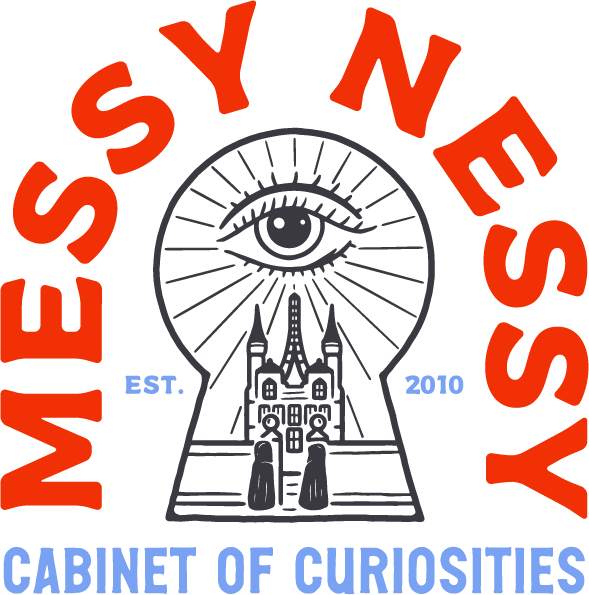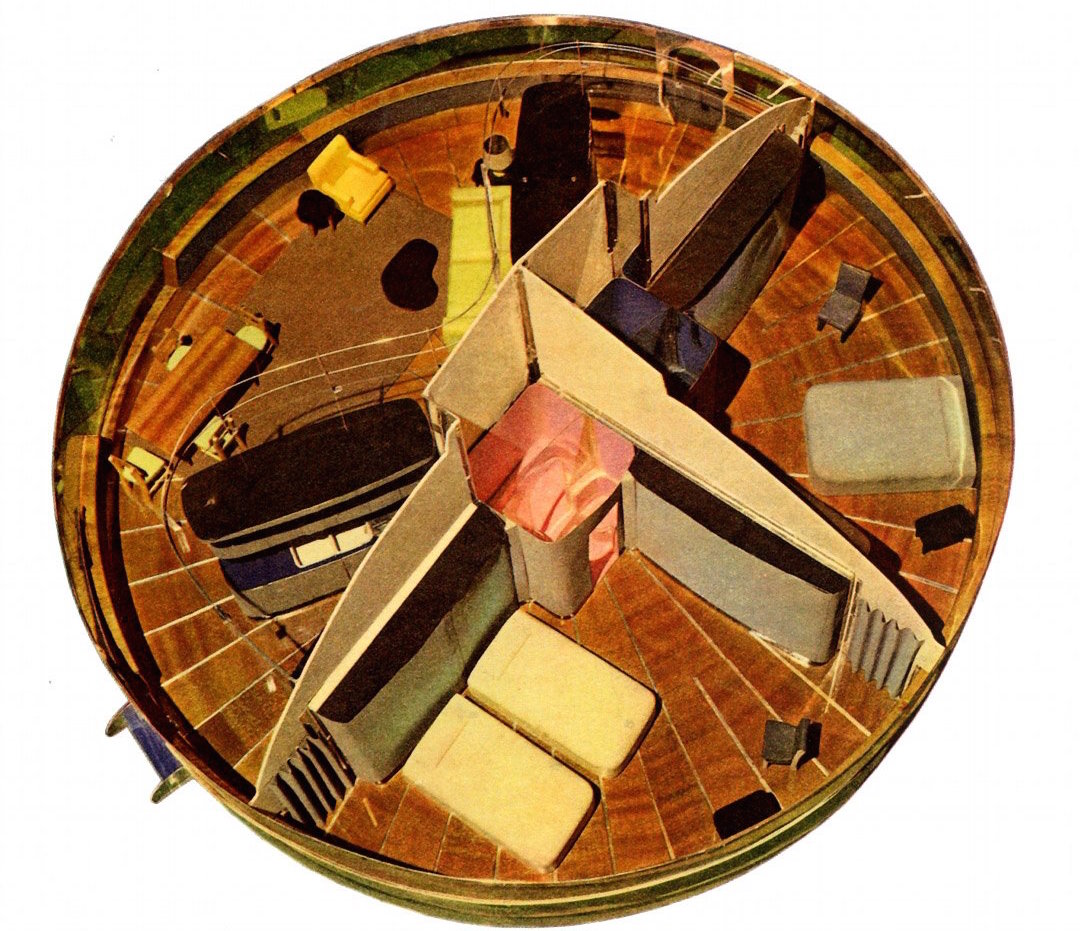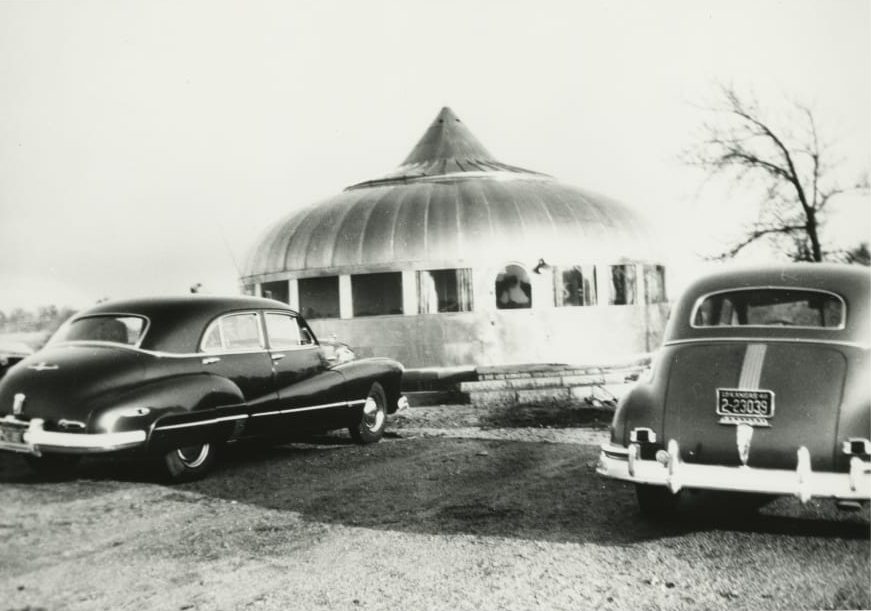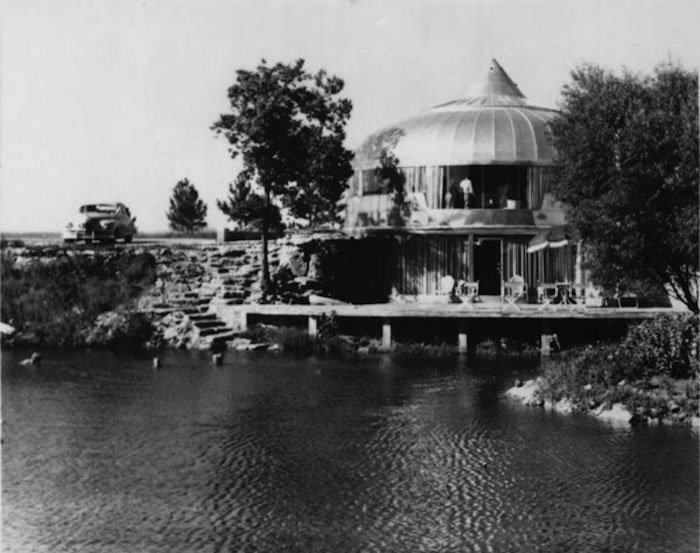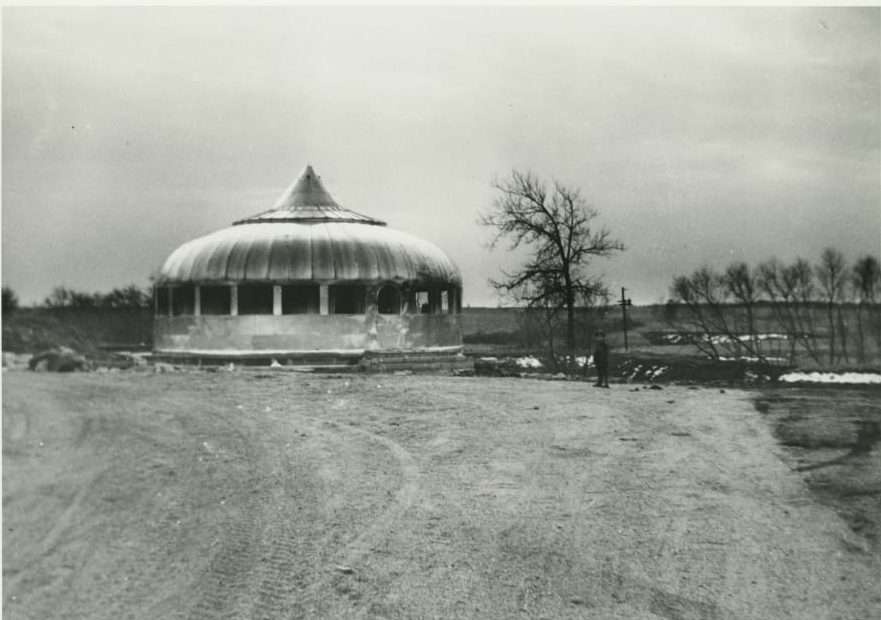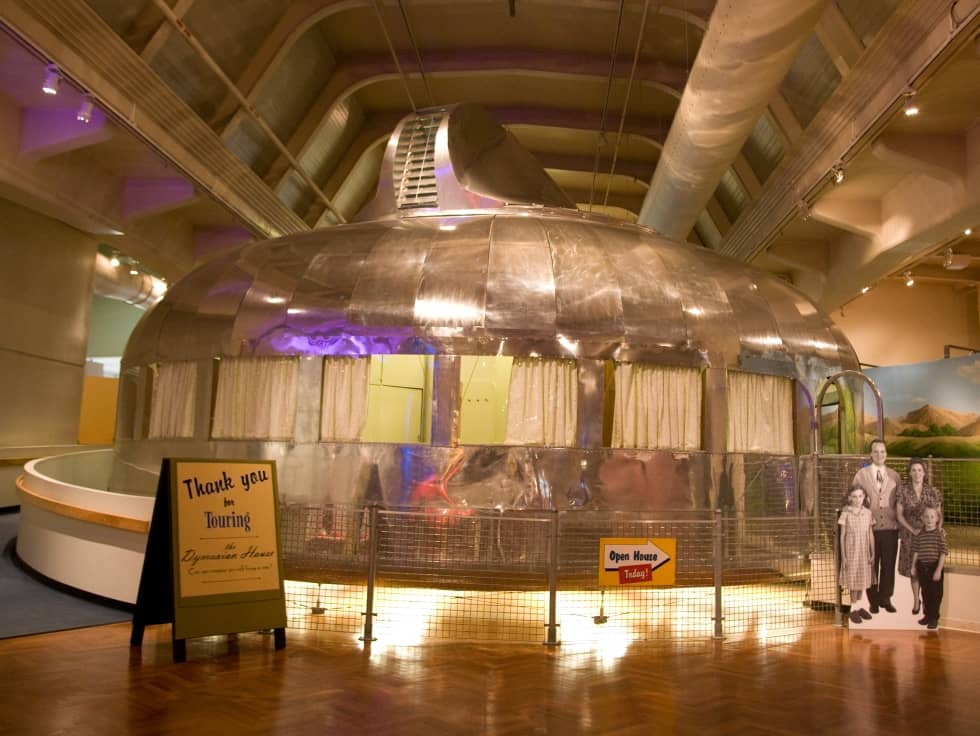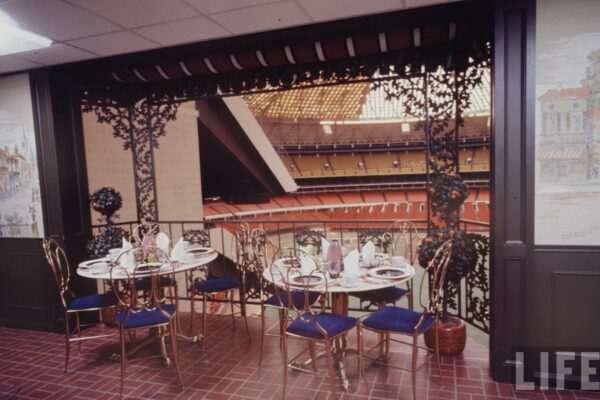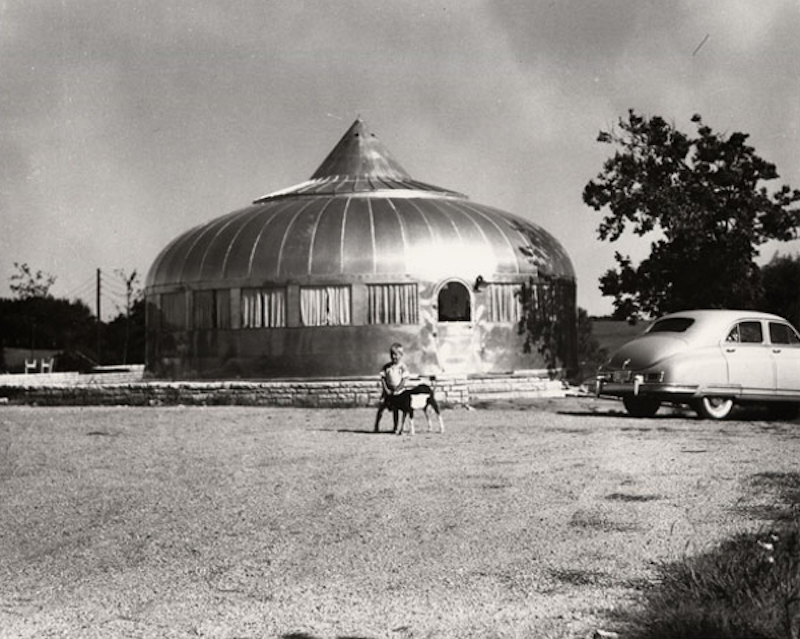
If a real estate listing described a house with two bedrooms, two bathrooms, and a spacious living/dining room that was self-heating, self-cooling, self-cleaning, self-powering, environmentally friendly, and priced at the cost of a Cadillac, it probably wouldn’t take very long before it was snapped up off the market. But plans for such a house exist, and what’s even crazier is that it was first designed in the 1920s.
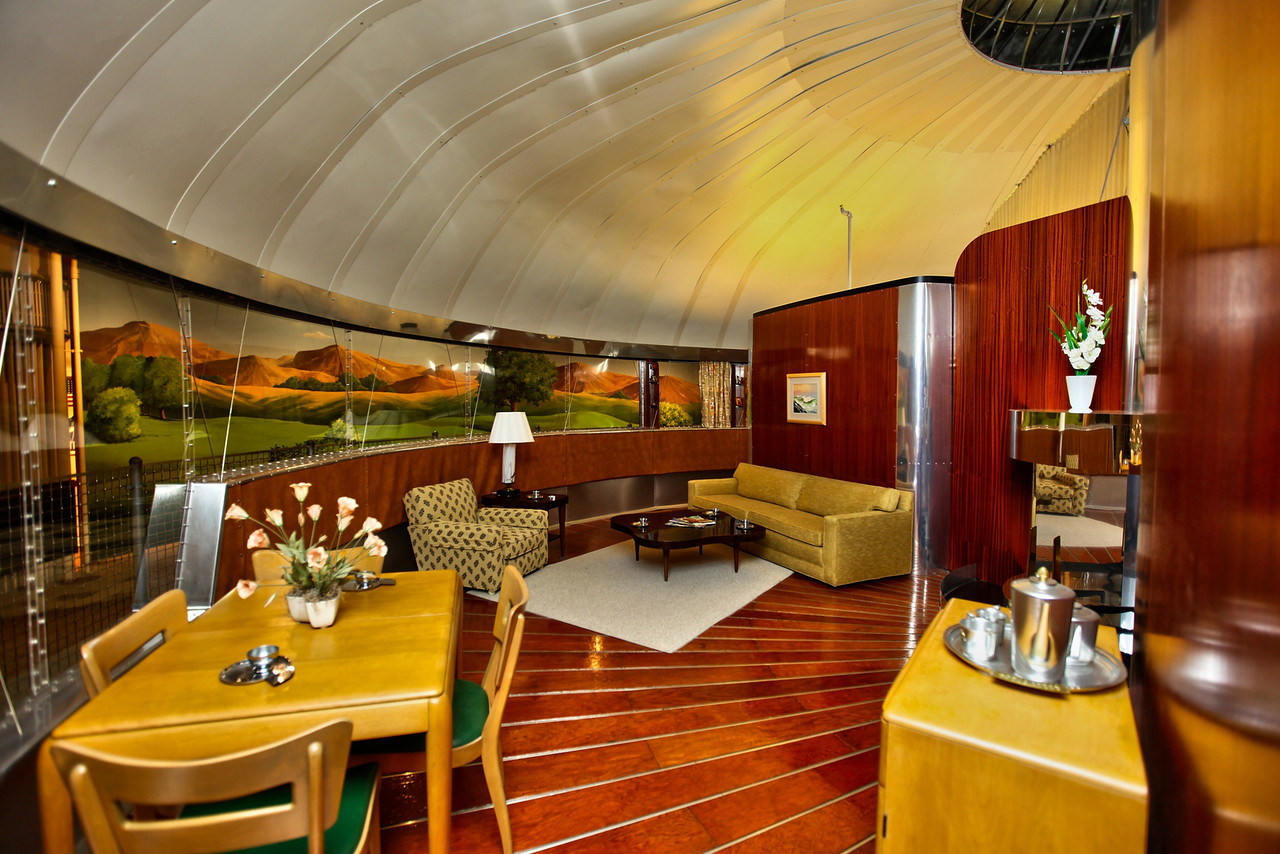
© Henry Ford museum/ Interior, Wichita House
The Dymaxion House was the invention of Buckminster Fuller, famed inventor of the geodesic dome. It stemmed from his desire to create a “dwelling machine” that corrected problems he saw in homes and the homebuilding process.
The name, coined by Fuller, was a portmanteau of the words dynamic, maximum and tension. The house was dynamic in the sense that it was very portable and had a flexible floor plan. It made maximum use of its 1,100 square feet and literally used tension to stay up.
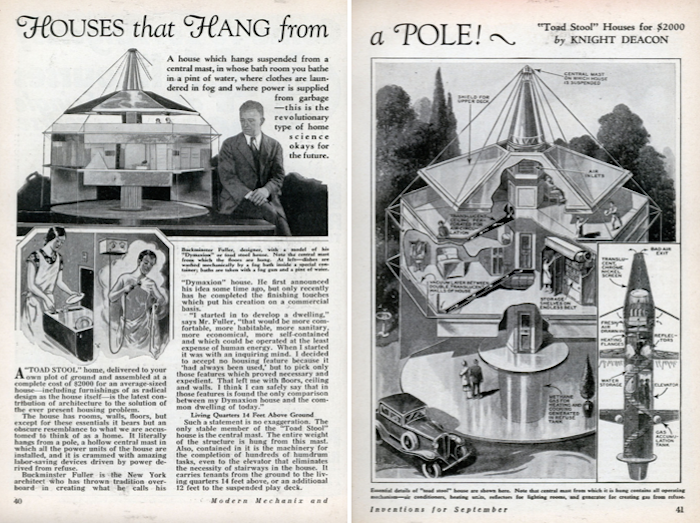
A Dymaxion prototype featured in 1932 issue of Modern Mecanix
The house was made of aluminum, which was very strong and required very little maintenance, so there was no need to paint the house or re-do the roof.
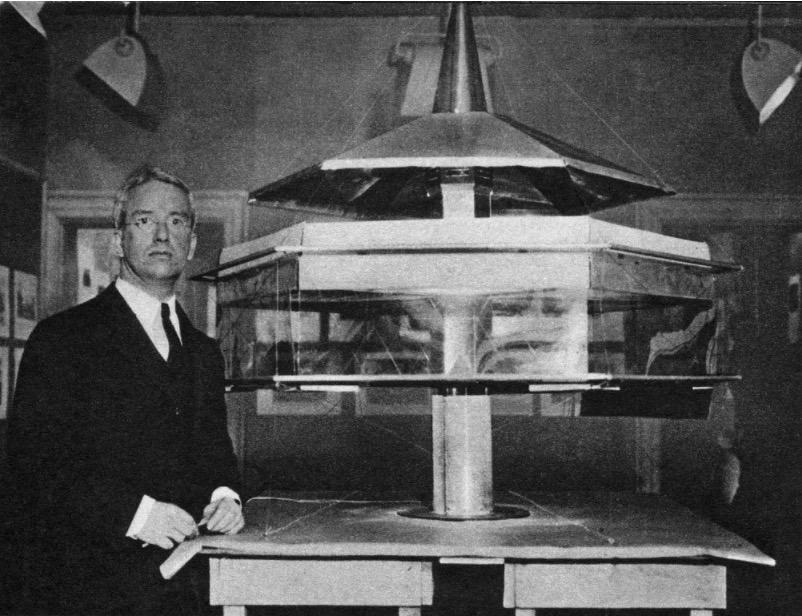
Buckminster Fuller with first model of Dymaxion House 1927 / source
It was initially shaped like a hexagon, though later designs were round. Fuller’s later prototypes look like a giant Hershey Kiss, or a metal circus tent, or maybe an Airstream trailer’s round, less portable cousin.
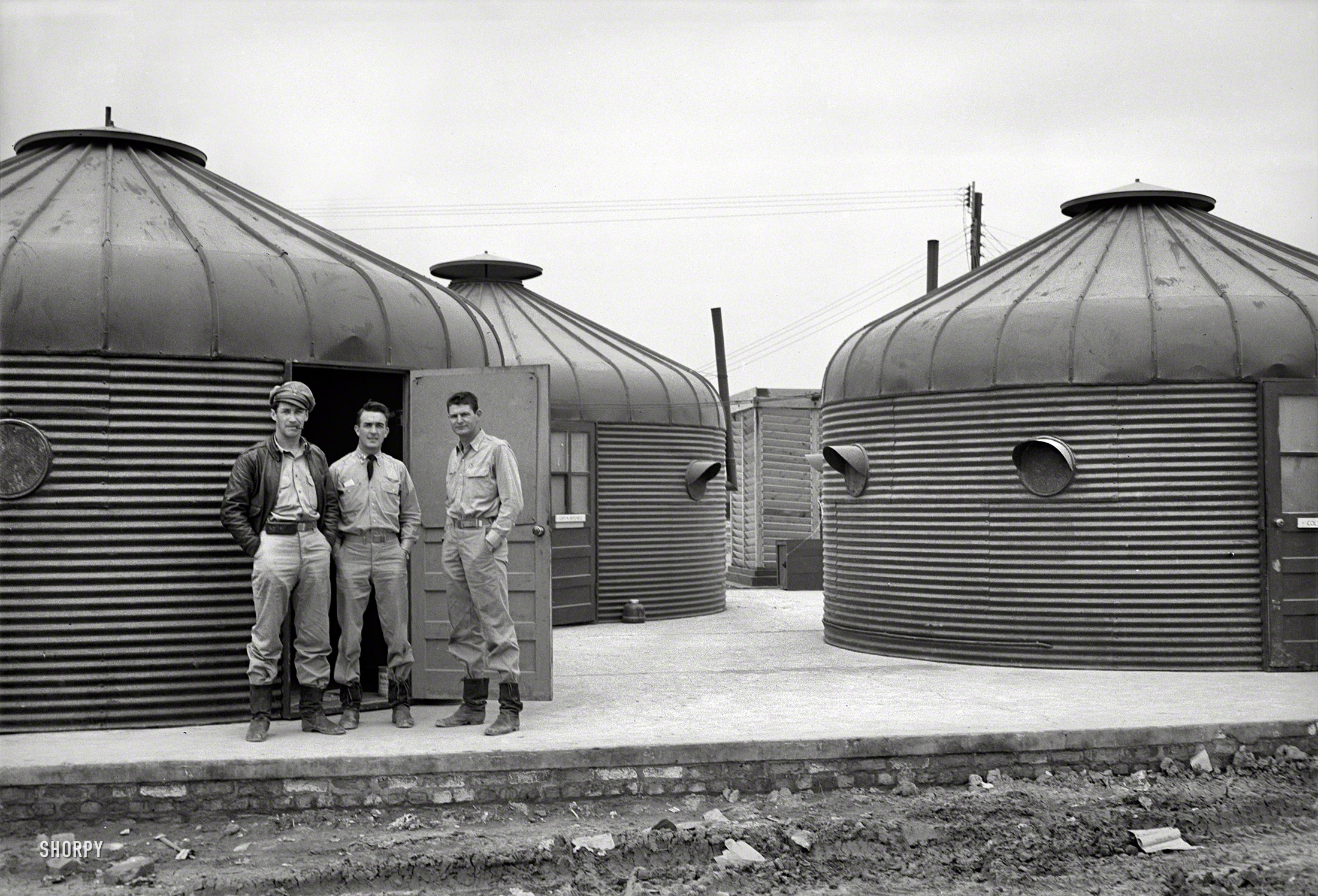
U.S. pilots stand in front of a cluster of Dymaxion Deployment Units, North Africa, 1944
Cables were suspended from a pole in the middle of the house, like the spokes on a bicycle wheel, allowing the walls to be non-load bearing and making the Dymaxion safe during earthquakes, tornados, storms or even wartime.
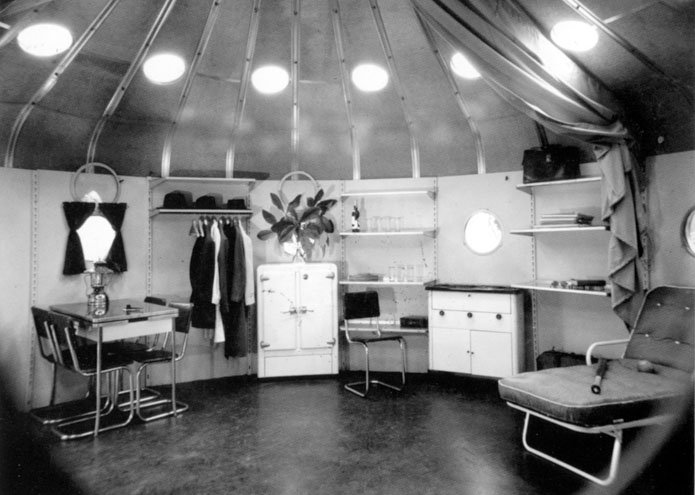
The central pole also contained all of the utilities, allowing the floor plan to be flexible and easily rearranged. For example, the dining room furniture could be moved out of the way, expanding the living room space to accommodate a larger party.
The Dymaxion was also designed to stay clean, using a downdraft system to draw dust through filters in the baseboard, which meant less time spent dusting and sweeping. A ventilator in the top of the house drew fresh air in, expelled hot air, and kept the wind out, reducing heating costs in the winter and cooling costs in the summer.
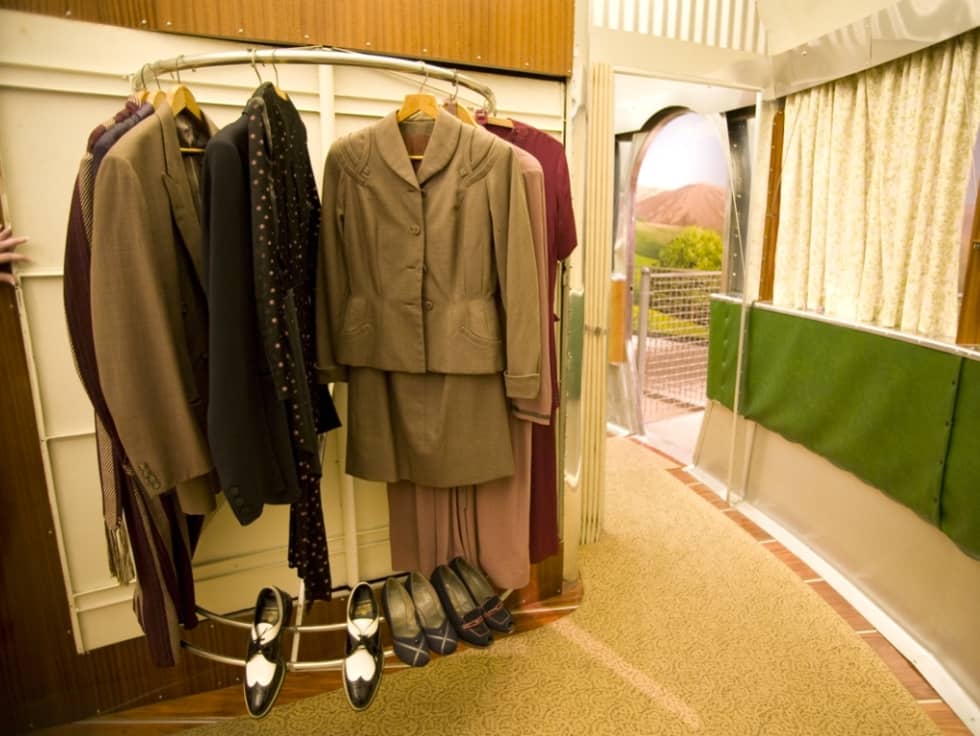
O Volving Closet/ Henry Ford Museum
Fuller designed every feature of the house to use energy, resources, and space efficiently, from the automated “O-volving” closets and shelves to the bathroom, which contained a “fogger” water vapor shower that only required one cup of hot water and a packaging toilet, which required no water at all. It was also designed with a wind turbine on the roof to generate its own power, and a system of gutters to collect water for use in the house.
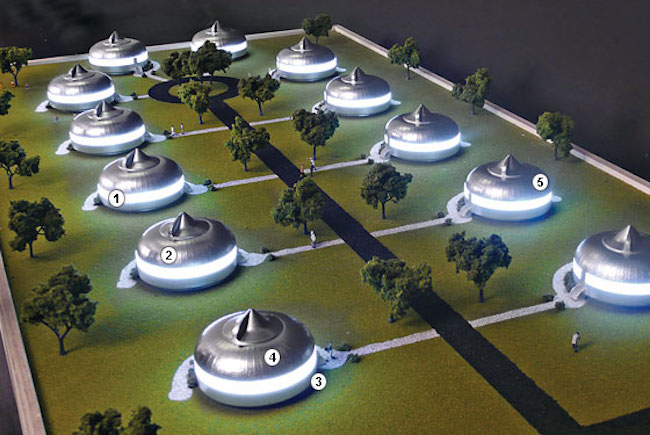
Estate of R. Buckminster Fuller
It was intended to be mass-produced and shipped in a metal tube. The house could then be easily assembled on-site. Each component weighed no more than 10 pounds, and the total weight of the Dymaxion was 3 tons (compared to the 150-ton weight of a regular, similarly-sized house).
And best of all, it could be purchased for the price of a new Cadillac.
The Great Depression and the outbreak of WWII led Fuller to abandon the idea for a little while, but he returned to it in the 1940s, when the housing boom created by the flood of G.I.s returning home made the concept of mass-produced and easily shipped homes very attractive. Fuller signed a research contract with an aircraft company that had a lot of aluminum (the primary material of the Dymaxion) in the aftermath of the war, and he made two Dymaxion prototypes, the Barwise and the Danbury.
The Dymaxion House had a lot of potential and in April 1946, Fortune Magazine predicted that it would have more social influence than the automobile. Unfortunately, the concept was ultimately abandoned. Fuller wasn’t willing to compromise.
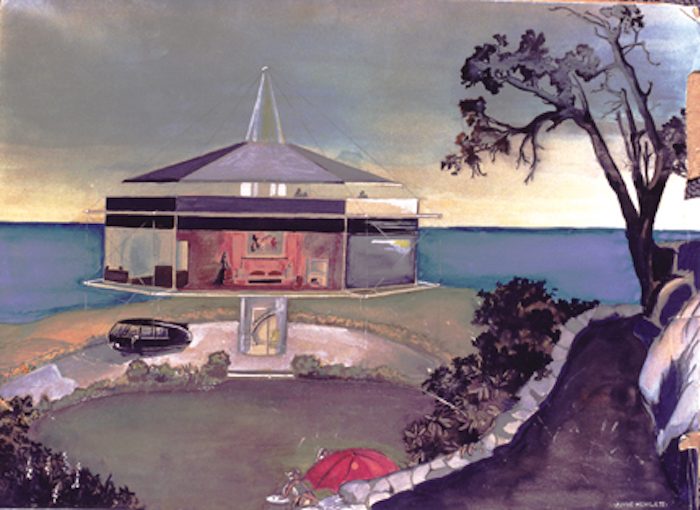
Painting of the third Dymaxion House by Anne Hewlett Fuller (1932)
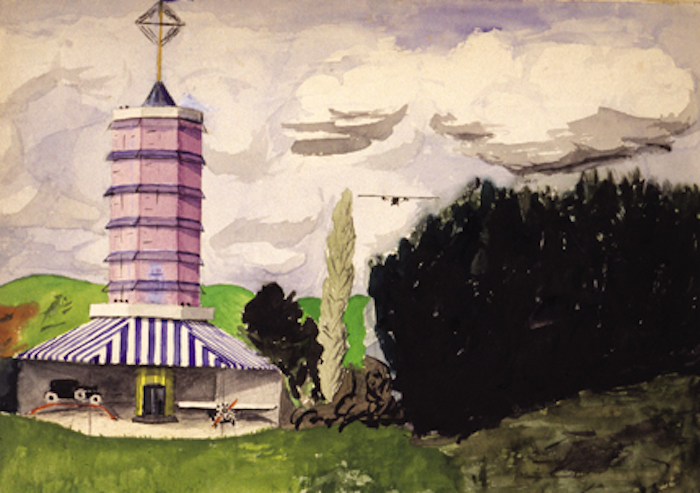
4D Tower Prototype, 1928 (source)
He wasn’t fully satisfied with any of the prototypes, which led to disagreements with others in the company, and neither was mass-produced.
In 1948, a former investor purchased both prototypes and combined them into what became known as the Wichita House. Over time, the Wichita House was modified to fit the family’s needs. It was not suspended, as the design of the original Dymaxion intended, and extensions were added around it.
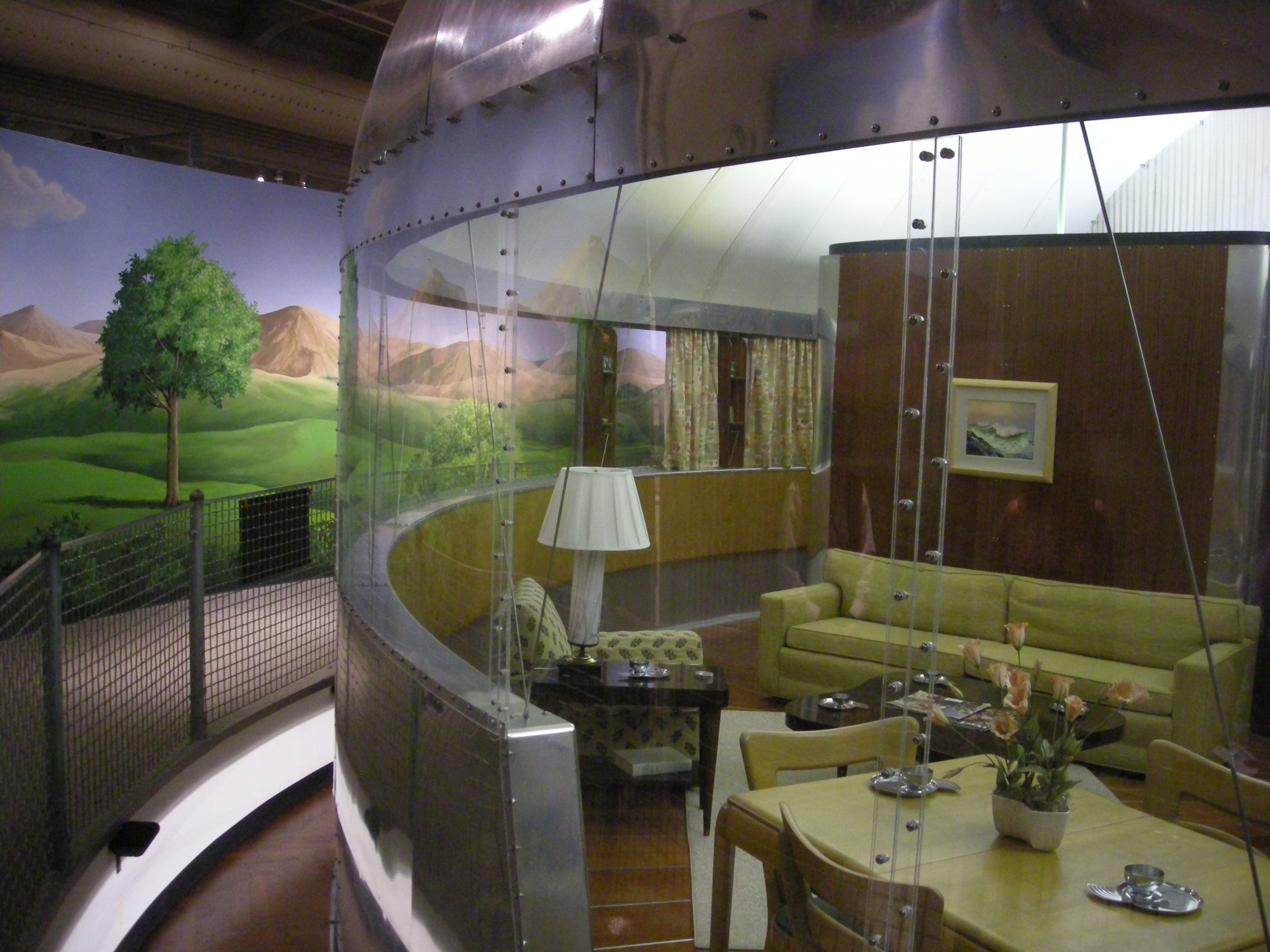
Henry Ford Museum in Dearborn, Michigan / Wikimedia
The Wichita House was eventually disassembled and shipped to the Henry Ford Museum in Michigan, where it was restored and is now on display.
Buckminster Fuller flied the freak flag for 20th century design, developing numerous inventions in addition to his Dymaxion House. There was of course also a Dymaxion car (it was voted one of the 50 worst cars of all time). But for all his efforts, Ronald Reagan gave him the Presidential Medal of Freedom in 1983. Well-deserved I’d say for being such a science-fiction visionary.

